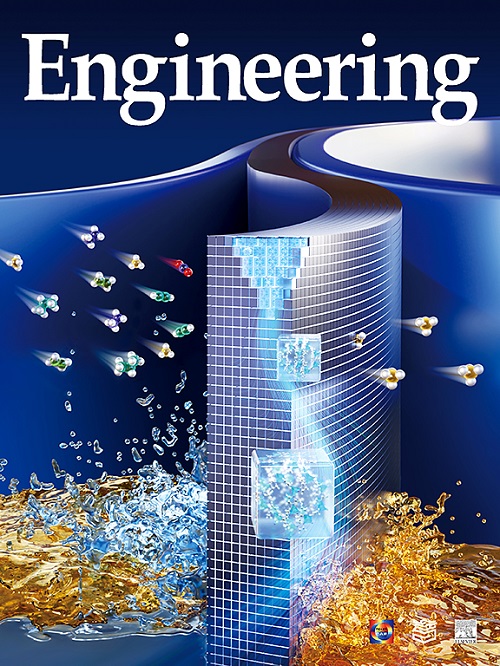Design Principles and Emerging Applications of Starch-Involved Superwettable Systems
IF 10.1
1区 工程技术
Q1 ENGINEERING, MULTIDISCIPLINARY
引用次数: 0
Abstract
Inspired by the remarkable surface wetting behavior of natural organisms, artificially designed superwettable systems have attracted significant attention from multidisciplinary scientists over the past two decades. Starch is an eco-friendly, nontoxic, and low-cost natural polymer that serves as an alternative to nonbiodegradable and/or bioincompatible synthetic polymers in these systems. This review explores the unique contributions of starch to superwettable systems from design principles to emerging applications. First, the fundamental theories and design principles underlying starch-involved superwettable systems are introduced. The specific design principles of these systems are comprehensively discussed from the aspects of intrinsic properties (e.g., hydrophilicity, film-forming properties, adhesiveness, and thermal decomposition), dimensionality (e.g., colloidal systems, zero-dimensional (0D) granules/particles, one-dimensional (1D) fibers, two-dimensional (2D) films/fibrous membranes/coatings, and three-dimensional (3D) fillers/porous materials/food textures), and biotransformation. It also provides an overview of their applications in functional biomaterials, oral delivery systems, emulsion polymerization, packaging technology, food taste modulation, and water treatment, with particular emphasis on intelligent systems. Each section summarizes recent advancements, highlighting the chemical and structural features. Finally, the review considers prospects for these superwettable systems, focusing on underutilized starch attributes and technical challenges.淀粉类超可湿系统的设计原则和新兴应用
在过去的二十年里,受自然生物显著的表面润湿行为的启发,人工设计的超可湿系统引起了多学科科学家的极大关注。淀粉是一种环保、无毒、低成本的天然聚合物,在这些系统中可以作为不可生物降解和/或生物不相容的合成聚合物的替代品。这篇综述探讨了淀粉对超可湿性体系的独特贡献,从设计原则到新兴应用。首先,介绍了淀粉类超可湿系统的基本理论和设计原则。这些系统的具体设计原则从内在特性(如亲水性、成膜性、粘附性和热分解)、维度(如胶体系统、零维(0D)颗粒/颗粒、一维(1D)纤维、二维(2D)薄膜/纤维膜/涂层、三维(3D)填料/多孔材料/食物纹理)和生物转化等方面进行了全面讨论。它还概述了它们在功能性生物材料、口服给药系统、乳液聚合、包装技术、食物味道调节和水处理方面的应用,特别强调了智能系统。每个部分总结了最近的进展,突出了化学和结构的特点。最后,回顾了这些超可湿性系统的前景,重点是未充分利用的淀粉属性和技术挑战。
本文章由计算机程序翻译,如有差异,请以英文原文为准。
求助全文
约1分钟内获得全文
求助全文
来源期刊

Engineering
Environmental Science-Environmental Engineering
自引率
1.60%
发文量
335
审稿时长
35 days
期刊介绍:
Engineering, an international open-access journal initiated by the Chinese Academy of Engineering (CAE) in 2015, serves as a distinguished platform for disseminating cutting-edge advancements in engineering R&D, sharing major research outputs, and highlighting key achievements worldwide. The journal's objectives encompass reporting progress in engineering science, fostering discussions on hot topics, addressing areas of interest, challenges, and prospects in engineering development, while considering human and environmental well-being and ethics in engineering. It aims to inspire breakthroughs and innovations with profound economic and social significance, propelling them to advanced international standards and transforming them into a new productive force. Ultimately, this endeavor seeks to bring about positive changes globally, benefit humanity, and shape a new future.
 求助内容:
求助内容: 应助结果提醒方式:
应助结果提醒方式:


